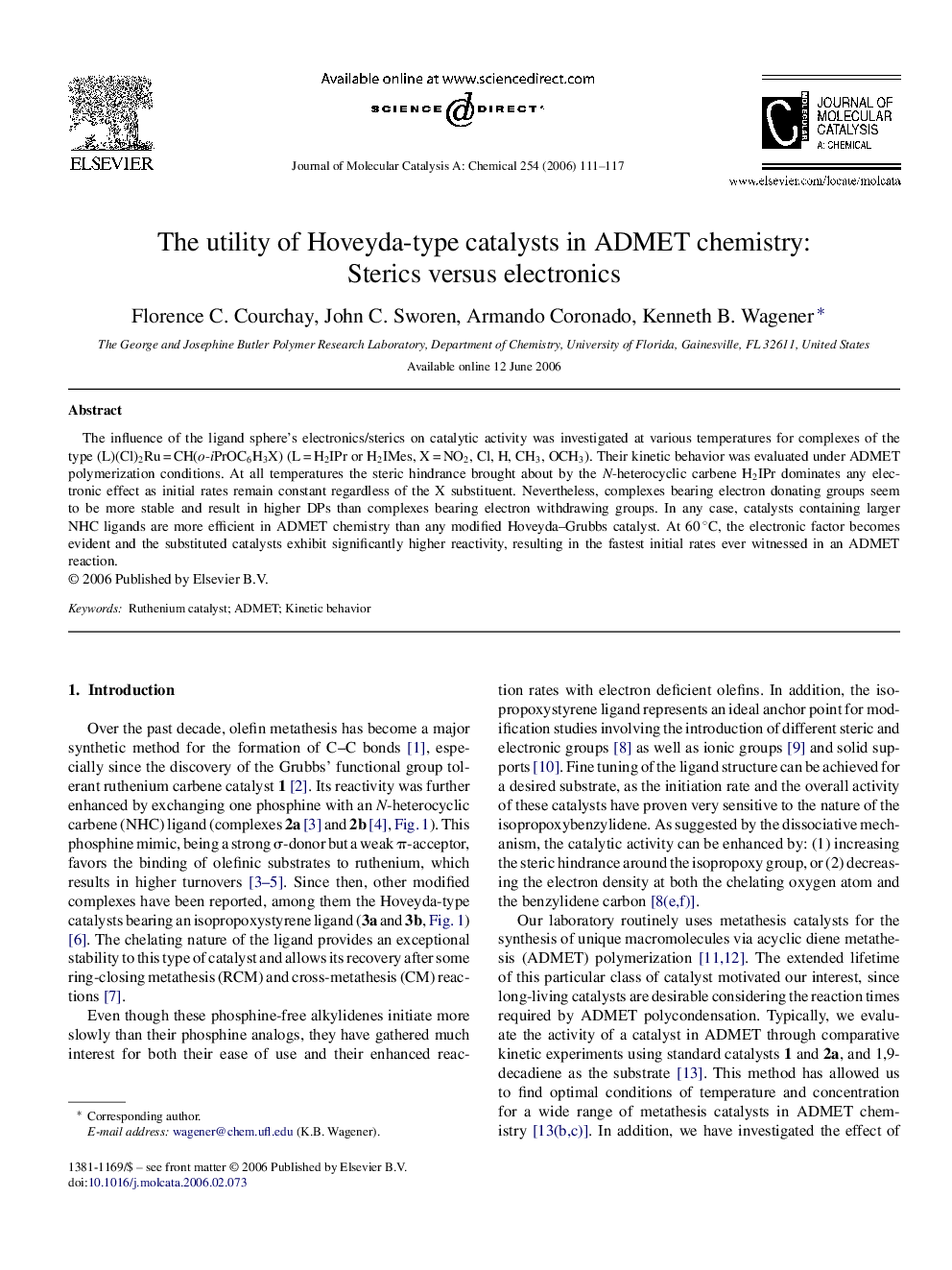| Article ID | Journal | Published Year | Pages | File Type |
|---|---|---|---|---|
| 68756 | Journal of Molecular Catalysis A: Chemical | 2006 | 7 Pages |
The influence of the ligand sphere's electronics/sterics on catalytic activity was investigated at various temperatures for complexes of the type (L)(Cl)2Ru = CH(o-iPrOC6H3X) (L = H2IPr or H2IMes, X = NO2, Cl, H, CH3, OCH3). Their kinetic behavior was evaluated under ADMET polymerization conditions. At all temperatures the steric hindrance brought about by the N-heterocyclic carbene H2IPr dominates any electronic effect as initial rates remain constant regardless of the X substituent. Nevertheless, complexes bearing electron donating groups seem to be more stable and result in higher DPs than complexes bearing electron withdrawing groups. In any case, catalysts containing larger NHC ligands are more efficient in ADMET chemistry than any modified Hoveyda–Grubbs catalyst. At 60 °C, the electronic factor becomes evident and the substituted catalysts exhibit significantly higher reactivity, resulting in the fastest initial rates ever witnessed in an ADMET reaction.
Graphical abstractExploration of the kinetic behavior of electronically modified Hoveyda-type catalysts in ADMET polymerization at various temperatures. Not only complexes bearing larger NHC ligands consistently afford higher degrees of polymerization, but the electronically modified catalysts tested exhibit the fastest initial rates ever witnessed in ADMET chemistry. Figure optionsDownload full-size imageDownload as PowerPoint slide
